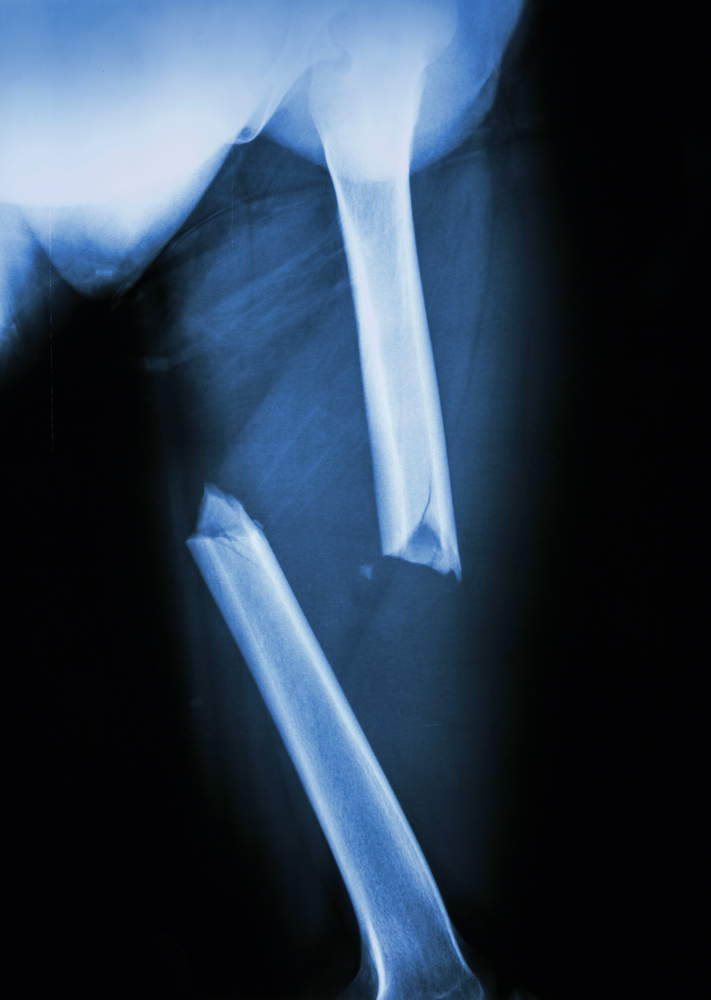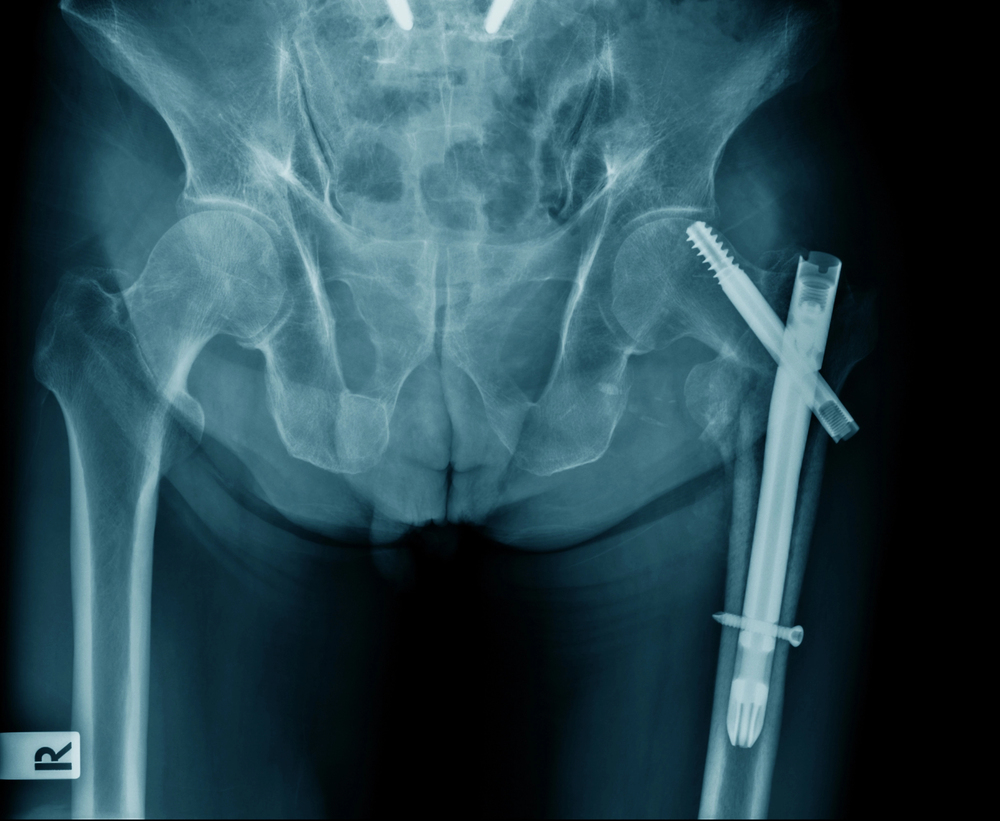Why is a Broken Femur Dangerous?
The thigh bone, also known as the femur, is the largest and strongest bone in the body. It supports the body’s weight when standing, stabilizes the body when moving, and connects the hip muscles, tendons, and ligaments to those in the knees.
Given its size, importance, and the long time it takes to heal, a broken femur is a serious medical problem.
Complications of a Broken Femur
A femur fracture can come with health complications regardless of age, but they are more common in older adults, who typically break their femur when they fall. Common complications of femur fractures include hip fractures, blood clots, infections, and limited mobility.
Furthermore, there are several types of femur fractures, some of which are more severe than others:
- Transverse fracture – The force broke the femur straight across the femur shaft in a horizontal line.
- Comminuted fracture – In this case, the bone has broken into three or more pieces.
- Oblique fracture – The femur break is an angled line across the shaft.
- Spiral fracture – Spiral fractures encircle the shaft. This break often happens when the leg is twisted.
- Open fracture – An open or compound fracture involves broken bone fragments sticking through the skin. In other cases, the wound is so deep that it reveals the bone. This type of femoral shaft fracture will most likely lead to complications, especially infections.
Here are common complications of femoral fractures, how they develop, and what consequences they can have,

Hip Fracture
A broken femur can increase the risk of a hip fracture due to the proximity of the femur’s shaft to the hip joint. To make matters worse for older adults, their femoral neck, or the upper part of the femur, is particularly vulnerable, especially if they have osteoporosis or weakened bones.
When a femur breaks, the force causing the break can often extend to the hip area and surrounding muscles. Additionally, during recovery from a femur fracture, the resulting instability increases the risk of falls, potentially leading to a broken hip.
Blood Clots
Broken femurs increase the risk of blood clots, especially deep vein thrombosis (DVT). This happens because the injured leg is immobilized during recovery, slowing down blood flow and making clots more likely to form in blood vessels, usually in the deep veins of the legs.
Older adults are more likely to develop this issue because their circulation is often already compromised. It’s particularly dangerous as the blood clot can break free and travel to the lungs, causing a life-threatening condition called a pulmonary embolism.
Infection
After a femur bone breaks, the risk of infection is higher in elderly residents, especially those with weakened immune systems.
While the body does have its natural healing process, femur fractures usually require a surgical procedure called an Open Reduction and Internal Fixation (ORIF) or external fixation surgery. Unfortunately, surgery increases the risk of bone and wound infections, which can create further complications.
For example, the patient may need multiple surgeries to deal with the infection, and if the infection isn’t contained, there is a significant amputation risk. Worse, prolonged hospital stays can put the person at risk of hospital-associated infections such as pulmonary or urinary tract infections. In severe cases, residents risk sepsis and even death.
Other surgical intervention risks include:
- Acute Compartment Syndrome (ACS) which can cause permanent nerve damage
- Fat embolism syndrome, where fat and bone marrow travel to the lungs through the bloodstream
- Injuries where pieces of the broken bone pierce surrounding tissue.
Limited Mobility
The prolonged healing process and potential complications, such as muscle atrophy or joint stiffness, can make it difficult to regain full mobility, especially in older adults.
Many nursing home residents struggle to restore normal muscle strength, suffer severe pain, and require physical therapy. They may have issues walking independently and require mobility devices such as a cane, walker, or wheelchair.
This loss of mobility can limit daily activities and social interactions, leading to depression and an overall decrease in the quality of life.
Risk Factors for Femur Fractures
In elderly patients, the bone heals more slowly due to risk factors such as weakened bones, reduced circulation, falls, and pre-existing conditions like osteoporosis.
Osteoporosis
Osteoporosis weakens bones by reducing bone density, making them more fragile and prone to fractures. This condition significantly increases the risk of breaks in older adults, especially in weight-bearing bones like the femur, often after minor falls or injuries.
Falls
Poor balance, medical conditions, hazards, and certain medications often cause falls in older adults. In a nursing home setting, falls are common when the facility fails to secure the environment and reduce accident hazards or when there aren’t enough nursing staff to supervise the residents properly.
Combined with osteoporosis, even a minor fall can end in a serious injury and a fractured bone.
Medical Conditions
Other medical conditions can increase the risk of a broken leg. These include:
- Arthritis
- Neurological disorders (e.g., Parkinson’s disease, stroke)
- Diabetes (due to nerve damage and increased fall risk)
- Vision impairments
- Muscle weakness
- Cognitive impairments (e.g., dementia)
Treatment and Recovery
Although it is a severe medical problem for elderly adults, there are some treatment options that can help.
Surgical Treatment
Common surgical procedures for broken femurs include Open Reduction Internal Fixation (ORIF) surgery and hip replacement surgery.
Open Reduction Internal Fixation involves realigning the broken thighbone and securing it with plates and screws. In contrast, hip replacement surgery involves replacing the damaged hip joint (which often happens together with a femoral shaft fracture) with an artificial joint.
Rehabilitation
Rehabilitation therapy can help people regain mobility and strength after a femur fracture. A physical therapist aids the patient in exercising to improve range of motion, strengthen muscles, and enhance balance.
Physical therapy also provides pain relief and reduces the risk of complications.
Challenges of Recovery
Nursing home residents often face additional challenges during the recovery process.
First, broken femurs cause significant pain, which is persistent and requires pain medication (which also comes with its own risks). The pain, displaced fracture, and surgery recovery can all limit a person’s mobility, leading to muscle atrophy and joint stiffness.
Finally, there is an increased risk of complications, like infections, blood clots, and pressure sores, while the fracture heals more slowly than in younger adults.
The Role of a Care Home Abuse Lawyer
A care home abuse lawyer can protect the rights of residents who have suffered a broken femur by providing the following services:
- Investigating the circumstances of the injury
- Investigating if the facility followed regulations and protocols
- Filing a claim
- Negotiating a settlement
- Representing the client in court if necessary
Negligence and Liability
Nursing homes have a legal responsibility to ensure their environment is free from accident hazards, that their staff is trained to prevent accidents, and that they hire enough staff to supervise the residents.
If they have failed to protect your loved one, you can hold them liable for the injury or inadequate care with the help of an attorney.
Compensation
Compensation can help families deal with the consequences of the fracture. When you file for compensation, you can cover medical expenses, rehabilitation services, medical devices, lost wages if you took time off to care for the injured person, and pain and suffering.
A professional can help you document the damages and present evidence to maximize the compensation.
Advocacy
A lawyer can also advocate for residents’ rights and ensure they receive appropriate care. They can investigate issues that led to the fracture and ensure the facility meets all care standards according to federal and state regulations. These legal professionals can also advocate for better rehabilitation and treatment options.

Secure Expert Legal Representation!
Broken femurs pose a significant danger to nursing home residents, potentially leading to infections, limited mobility, and even sepsis and death in the most severe cases.
If you have concerns about the facility your loved one is in, contact Nursing Home Law Center for legal help. We are dedicated to connecting victims and families with lawyers specializing in nursing home abuse and neglect.
Call us at (800) 926-7565 or fill out our contact form to schedule a free consultation.

